Students Collaborating with Nonprofit to Reduce Bird Collisions with Buildings
Dec 12, 2025 —
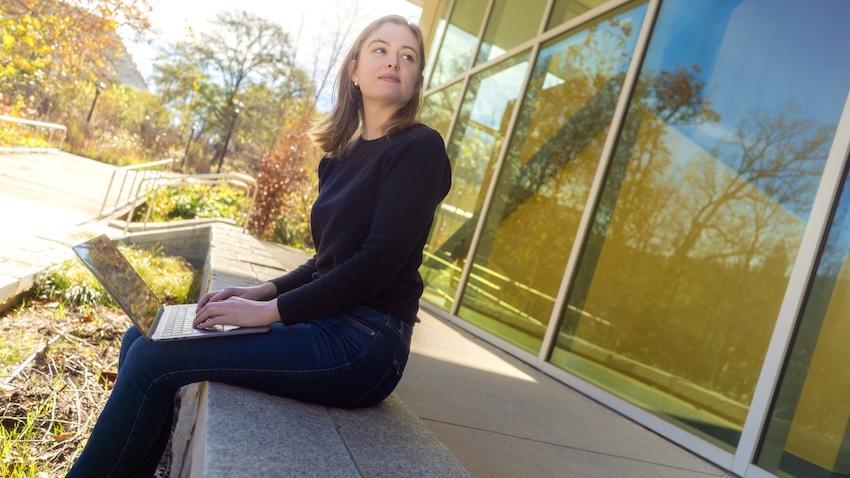
In 2015, before the cleaning crews hit the sidewalks of downtown Atlanta and before scavenger animals arose to snag an easy meal, Adam Betuel would venture into the darkness of the early mornings to look for birds.
Some were still alive, but most of the birds were dead. They were all too easy to find.
“I knew birds hit buildings, but I didn’t know much more about the issue at that time, and I was surprised how easily I just found birds,” Betuel said.
Birds flying into windows aren’t isolated events. Environmentalists estimate between 365 million and one billion birds die each year from colliding with structures in the U.S.
“That statistic is hard for most people to comprehend,” Betuel said. “When you think about the millions of homes we have and these high-rise buildings, and if each one is killing a few a year, that number can get big pretty quick.”
Betuel is the executive director of Birds Georgia, a nonprofit affiliate of the Audubon network that leads bird conservation efforts in Georgia. For 10 years, volunteers from the organization have combed Atlanta’s streets, collecting bird specimens.
Birds Georgia launched Project Safe Flight in 2015 to reduce bird building-collision mortality through data collection. Through legislation, the group aims to make building construction bird-friendly and reduce light pollution.
Environmentalists who study the issue have ranked Atlanta, which sits squarely on a migration route, as the fourth-most dangerous city for birds during fall migration. It is the ninth-most dangerous city during spring migration.
The number of bird deaths from collisions in Atlanta and across the state remains unknown. However, new data tools developed by student researchers in the College of Computing at Georgia Tech are helping Birds Georgia get a clearer picture of the issue.
“We’ve been working with different folks at Georgia Tech for years now, but it’s really picked up lately,” Betuel said. “There’s a lot of momentum and interest on campus to try to make the city safer for birds.”
Pushing for Policy
Ashley Boone, a Ph.D. student in human-centered computing in Tech’s School of Interactive Computing, has led the student effort to help Birds Georgia organize its data.
Boone said organizing data and knowing how to use it is critical to spark conversations about adopting legislation.
“We often see a gap between data collection and data advocacy,” she said. “Birds Georgia has done an amazing job of tracking collisions in Atlanta over the last 10 years. My goal is to understand the role technology can play in making data useful for policy change.”
User-interface tools designed by computer science undergraduate students James Kemerait and Ian Wood have ramped up that process. One tool converts data input into visualizations optimized for social media, while another consolidates the data collected by volunteers and external sources.
Boone said the desired legislation would mirror policies implemented by New York City. Those policies require the use of bird-safe materials — like window film with patterned designs that break up reflections — in new buildings and buildings undergoing significant renovations.
What Can Residents Do?
Residents, whose homes account for about 40% of bird collision deaths in the U.S., can also make an impact.
“Households are an underexamined cause of bird collisions,” Boone said. “We focus on the big buildings because it’s easier to convince one manager of a large building to use bird-safe materials, and it’s easier for a policy to address a commercial building. But the sheer volume of residential buildings in the U.S. has a tremendous impact on the number of collisions.”
Steps that homeowners can take include:
- Buying bird-safe film or making do-it-yourself versions of it to put on windows.
- Placing attractive objects like birdhouses and birdfeeders very close or very far away from windows.
- Turning off lights after 9 p.m. on the busiest migration nights of the year.
Betuel said millions of birds can fly over Atlanta on a single night during migration, and they are attracted to the city lights.
“They’ll come into urban centers and collide with an illuminated building, or maybe they overnight somewhere that isn’t safe,” he said. “The next day, they’re surrounded by glass, and birds don’t understand reflection.”
Residents can visit the Birds Georgia website to sign up for the Lights Out Pledge. Those who sign up will receive a text on the 10 busiest migratory nights of the year, and they will be asked to turn their lights off early.
The tools provided by Georgia Tech gave Birds Georgia insight into the number of bird species affected by collisions — more than 140, according to Betuel.
Betuel said that when the organization reaches an estimate of bird collisions, he hopes the number will raise alarms and turn people’s attention to the ecological impact.
“All these birds being lost results in fewer birds to eat pest insects, fewer birds to pollinate flowers, fewer birds to disperse seeds — all the ecological functions that we need, that they’re doing in the background that most people aren’t keen to,” he said. “If this decline in bird life continues to happen, at some point, there will be issues with our ecosystems functioning as they always have.”
Nathan Deen, Communications Officer I
Georgia Tech School of Interactive Computing
ndeen6@gatech.edu
NSF Grant Funds Protein Research for Drug Discovery and Personalized Medicine
Dec 10, 2025 —
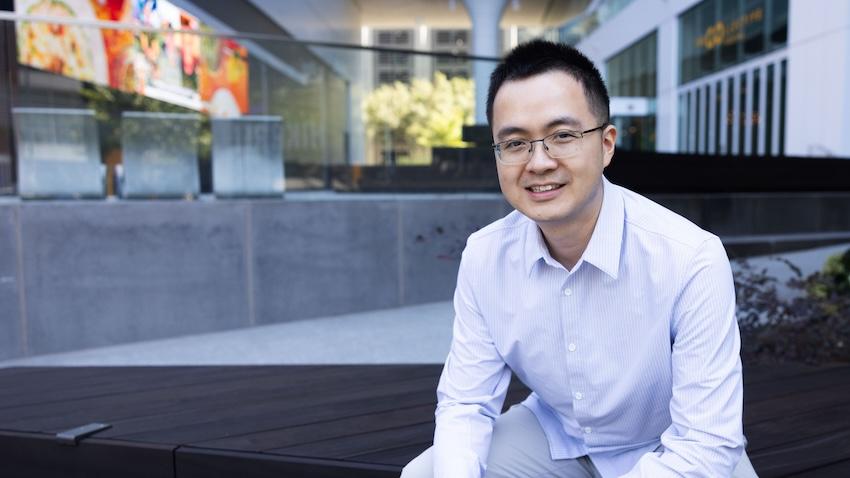
Proteins, including antibodies, hemoglobin, and insulin, power nearly every vital aspect of life. Breakthroughs in protein research are producing vaccines, resilient crops, bioenergy sources, and other innovative technologies.
Despite their importance, most of what scientists know about proteins only comes from a small sample size. This stands in the way of fully understanding how most proteins work and unlocking their full potential.
Georgia Tech’s Yunan Luo believes artificial intelligence (AI) could fill this knowledge gap. The National Science Foundation agrees. Luo is the recipient of an NSF Faculty Early Career Development (CAREER) award.
“So much of biology depends on knowing what proteins do, but decades of research have concentrated on a relatively small set of well-studied proteins. This imbalance in scientific attention leads to a distorted view of the biological landscape that quietly shapes our data and our algorithms,” Luo said.
“My group’s goal is to build machine learning (ML) models that actively close this gap by generating trustworthy function predictions for the many proteins that remain understudied.”
[Related: Yunan Luo to use AI for Protein Design and Discovery with Support of $1.8 Million NIH Grant]
In his proposal to NSF, Luo coined this rich-get-richer effect “annotation inequality.”
One problem of annotation inequality is that it slows progress in disease prognosis, drug discovery, and other critical biomedical areas. It is challenging to innovate the few proteins that scientists already know so much about.
A cascading effect of annotation inequality is that it diminishes the effectiveness of studying proteins with AI.
AI methods learn from existing experimental data. Datasets skewed toward well-known proteins propagate and become entrenched in models. Over time, this makes it harder for computers to research understudied proteins.
“Protein annotation inequality creates an effect analogous to a vast library where 95% of patrons only read the top 5% popular books, leaving the rest of the collection to gather dust,” Luo said.
“This has resulted in knowledge disparities across proteins in current literature and databases, biasing our understanding of protein functions.”
The NSF CAREER award will fund Luo with over $770,000 for the next five years to tackle head-on the problem of protein annotation inequality.
Luo will use the grant to build an accurate, unbiased protein function prediction framework at scale. His project aims to:
- Reveal how annotation inequality affects protein function prediction systems
- Create ML techniques suited for biological data, which is often noisy, incomplete, and imbalanced
- Integrate data and ML models into a scalable framework to accelerate discoveries involving understudied proteins
More enduring than the ML framework, Luo will leverage the NSF award to support educational and outreach programs. His goal is to groom the next generation of researchers to study other challenges in computational biology, not just the annotation inequality problem.
Luo teaches graduate and undergraduate courses focused on computational biology and ML. Problems and methods developed through the CAREER project can be used as course material in his classes.
Luo also championed collaboration with Georgia Tech’s Center for Education Integrating Science, Mathematics, and Computing (CEISMC) in his proposal.
Through this partnership, local high school teachers and students would gain access to his data and models. This promotes deeper learning of biology and data science through hands-on experience with real-world tools.
Luo sees reaching students and the community as a way of paying forward the support he received from Georgia Tech colleagues.
“I am incredibly grateful for this recognition from the NSF,” said Luo, an assistant professor in the School of Computational Science and Engineering (CSE).
“This would not have been possible without my students and collaborators, whose hard work laid the groundwork for this proposal.”
Luo praised CSE faculty members B. Aditya Prakash, Xiuwei Zhang, and Chao Zhang for their guidance. All three study machine learning and computational bioscience, two of CSE’s five core research areas.
Luo also thanked Haesun Park for her support and recommendation for the CAREER award. Park is a Regents’ Professor and the chair of the School of CSE.
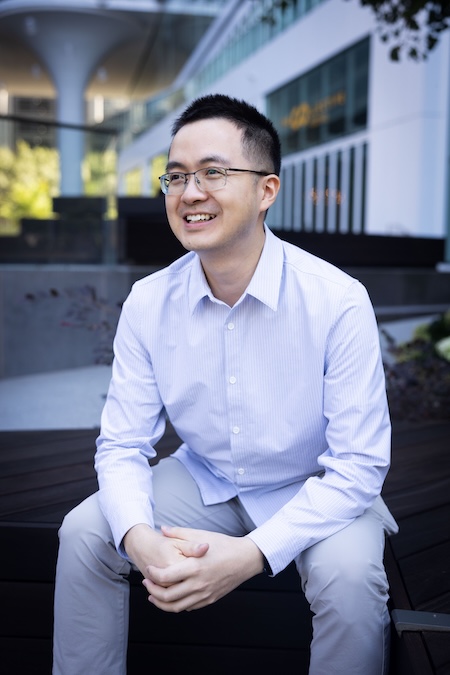
Bryant Wine, Communications Officer
bryant.wine@cc.gatech.edu
Advancing Neonatal Health Monitoring in Ethiopia
Dec 08, 2025 — Atlanta, GA
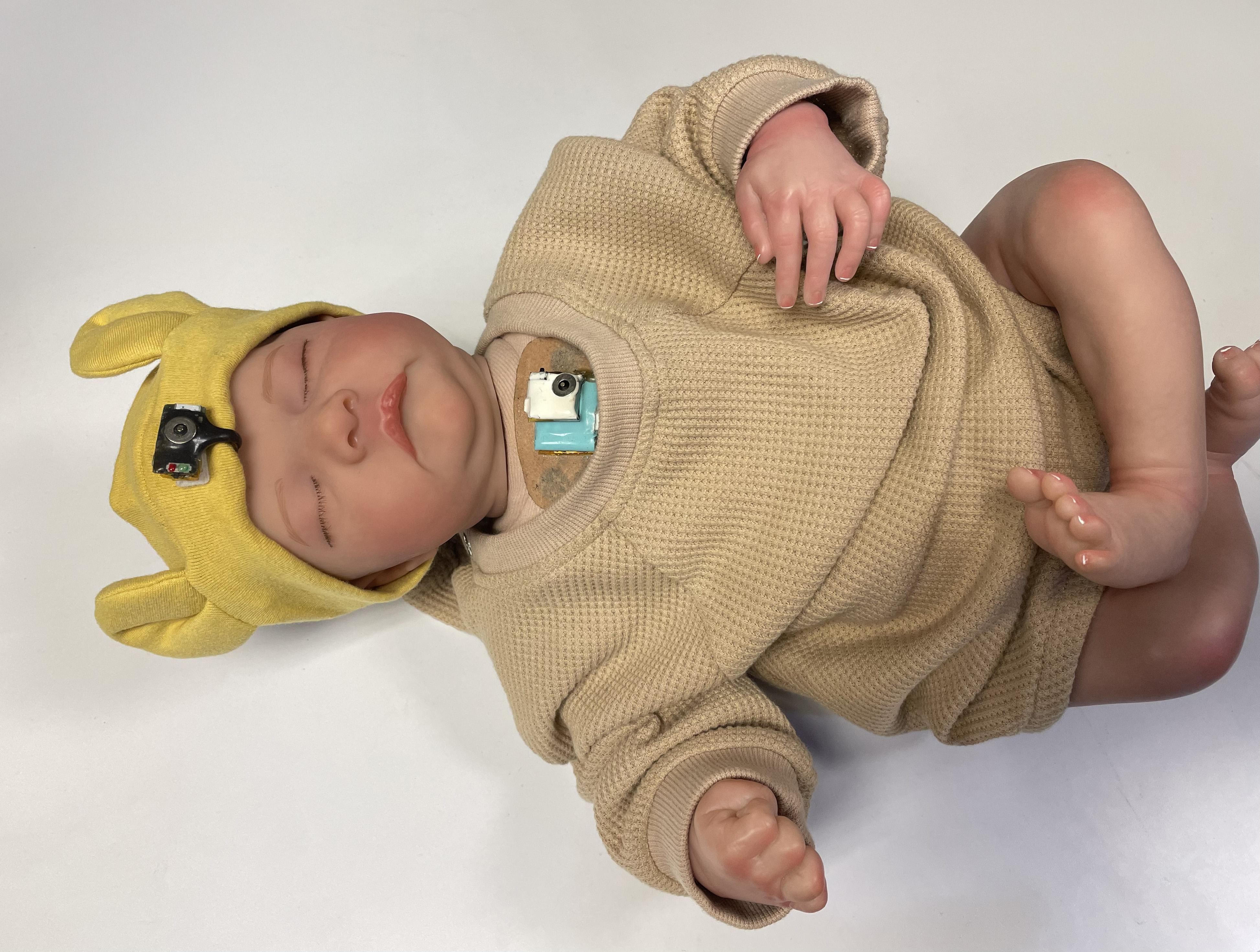
Wearable chest-mounted patch and forehead-mounted pulse oximeter shown on a mannequin baby for illustration
Soft, wearable system offers continuous wireless monitoring of newborns’ health.
A new, soft, all-in-one, wearable system has been designed for continuous wireless monitoring of neonatal health in low-resource settings. Developed by Georgia Tech researchers using advanced packaging technologies, the system features a chest-mounted patch and a forehead-mounted pulse oximeter that transmits real-time data to a smartphone app.
The wearable device measures and records important clinical parameters such as heart rate, respiration rate, temperature, electrocardiograms, and blood oxygen saturation. Speedy detection of abnormal readings in resource-challenged neonatal units could significantly reduce newborn mortality rates.
The device’s pilot study, conducted at Tikur Anbessa Specialized Hospital (TASH) in Addis Ababa, in collaboration with Abebaw Fekadu, Ph.D., from the Centre for Innovative Drug Development and Therapeutic Trials for Africa (CDT Africa Inc.), and neonatologist Asrat Demtse, M.D., from the TASH department of pediatrics, demonstrated a significant improvement over current vital sign monitoring and recording methods by providing continuous oversight using less medical equipment while also reducing handwritten paper tracking. Vital signs are a group of the most crucial medical data that indicate the status of the body's life-sustaining functions. The pairing of this wearable system with a smartphone app automated the monitoring process and delivered a superior level of neonatal care compared to the current processes at Ethiopia’s best hospital.
Medical staff and parents also observed a reduced need to wake their babies when using the wearable monitoring system. In addition, after participating in the study, 84% of Ethiopian parents said they would use the device at home.
“Professor Hong Yeo and I connected immediately after he gave a brief research talk about a new, wearable cardiac monitor for children,” said Rudy Gleason. “I asked him if we could co-develop a wearable device for newborn babies in Ethiopia that measured not one, but a variety of vital signs. We both thought it was a great idea.”
Yeo and Gleason are faculty members in the George W. Woodruff School of Mechanical Engineering and the Wallace H. Coulter Department of Biomedical Engineering at Georgia Tech. And both are affiliated with Georgia Tech’s Institute for People and Technology, which seeks to improve global health.
In 2009, Gleason and his wife were in the process of adopting a baby from Ethiopia named Kennedy. Before they could bring her home, however, she died — the result, Gleason said, of a seemingly preventable combination of malnutrition and diarrhea.
“This loss redirected my academic teaching, research, and service activities at Georgia Tech,” said Gleason. “Since then, I’ve spent most of my career focused on developing resource-appropriate biomedical devices to reduce maternal and child mortality.”
“When we started this latest study, Ethiopian parents were reluctant to participate. But once we recruited a few mothers in the neonatal intensive care unit (NICU), everyone in the NICU community wanted their child to participate in our wearable health monitoring system.”
According to Yeo, “We designed the wearable patch as a safe, clinical-grade solution with minimal skin irritation. Its key design advantage lies in the use of nanomembranes, which allows the device to be soft and highly conformal to the baby's skin. Wearing the device helps to ensure critical events are not missed since the built-in automation acts as a force multiplier, freeing clinical staff to focus more on complex decision-making rather than manual data acquisition.”
“Rudy has a deep love for the people of Ethiopia. I feel fortunate to have met him as we embark on this project aimed at helping sick babies in the country. Without his support, I could not envision bringing this technology to Ethiopia,” said Yeo.
During the past decade, child mortality rates have decreased in Ethiopia, but newborn deaths have remained mostly unchanged. Both Yeo and Gleason feel their new wearable neonatal device could significantly lower mortality rates for newborns in Ethiopia as they advance this research.
Citation: Zhou, L., Joseph, M., Lee, Y.J. et al. Soft, all-in-one, nanomembrane wearable system for advancing neonatal health monitoring in Ethiopia. npj Digit. Med. 8, 575 (2025).
DOI: https://doi.org/10.1038/s41746-025-01974-8
Funding: Gates Foundation (INV-006189) and the National Institutes of Health (R01HD100635). This work was also supported by the Imlay Foundation—Innovation Fund.
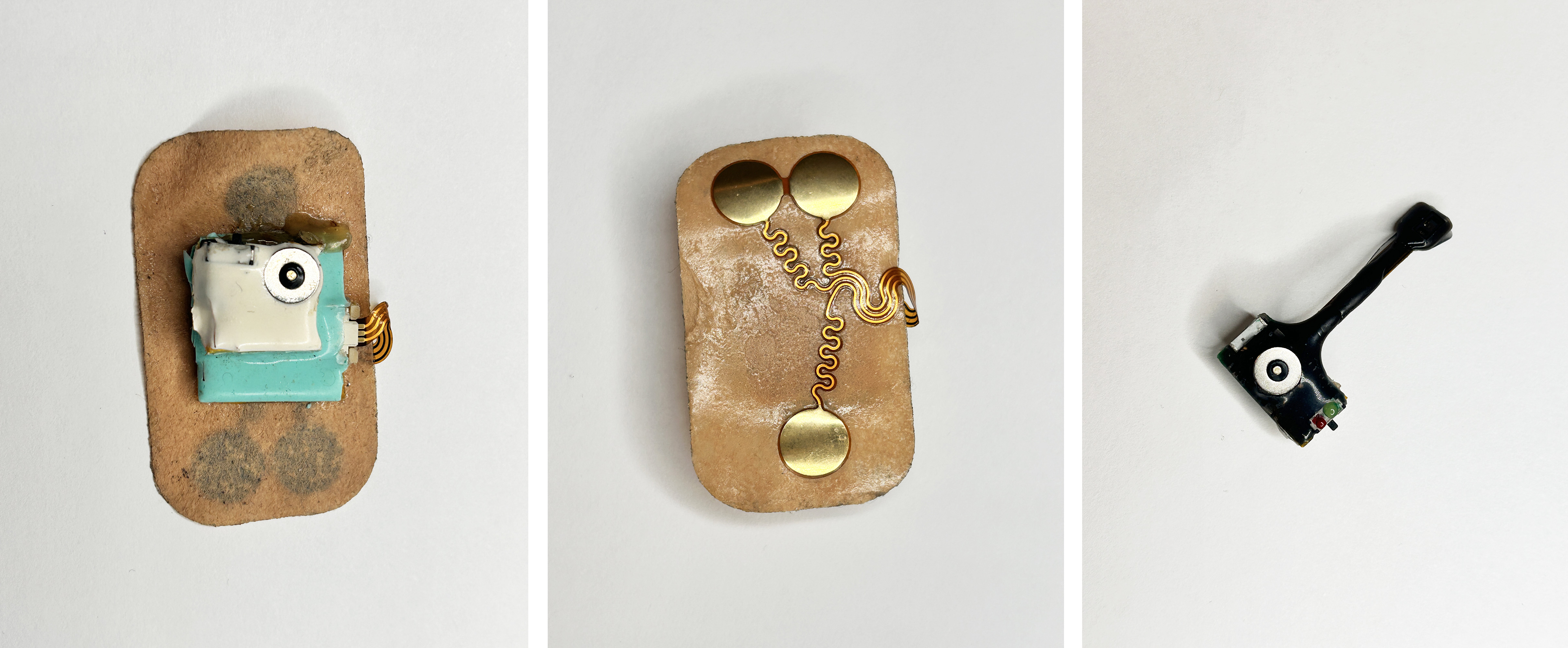
Wearable chest-mounted patch and forehead-mounted pulse oximeter shown close-up
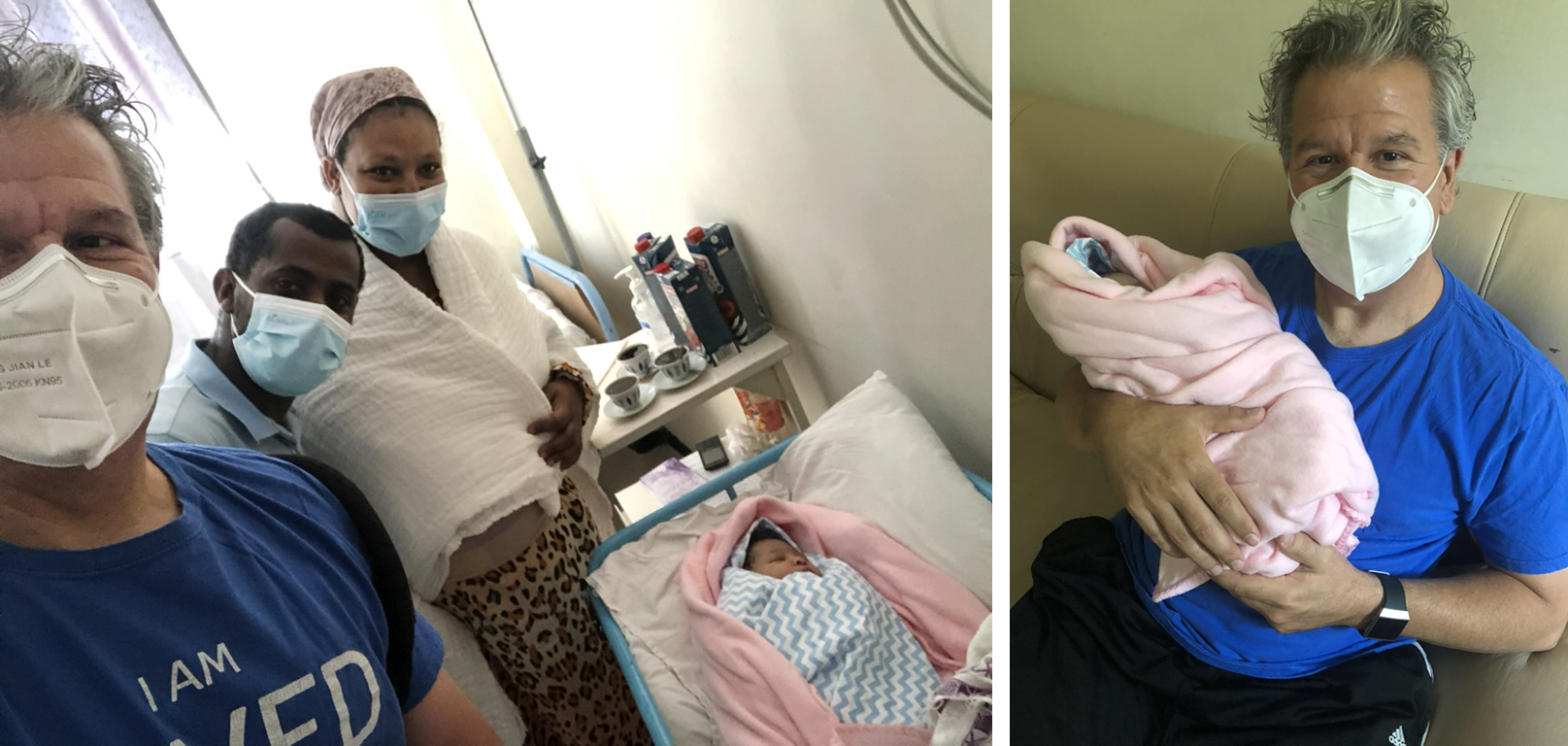
Professor Rudy Gleason with baby and parents at a hospital in Ethiopia
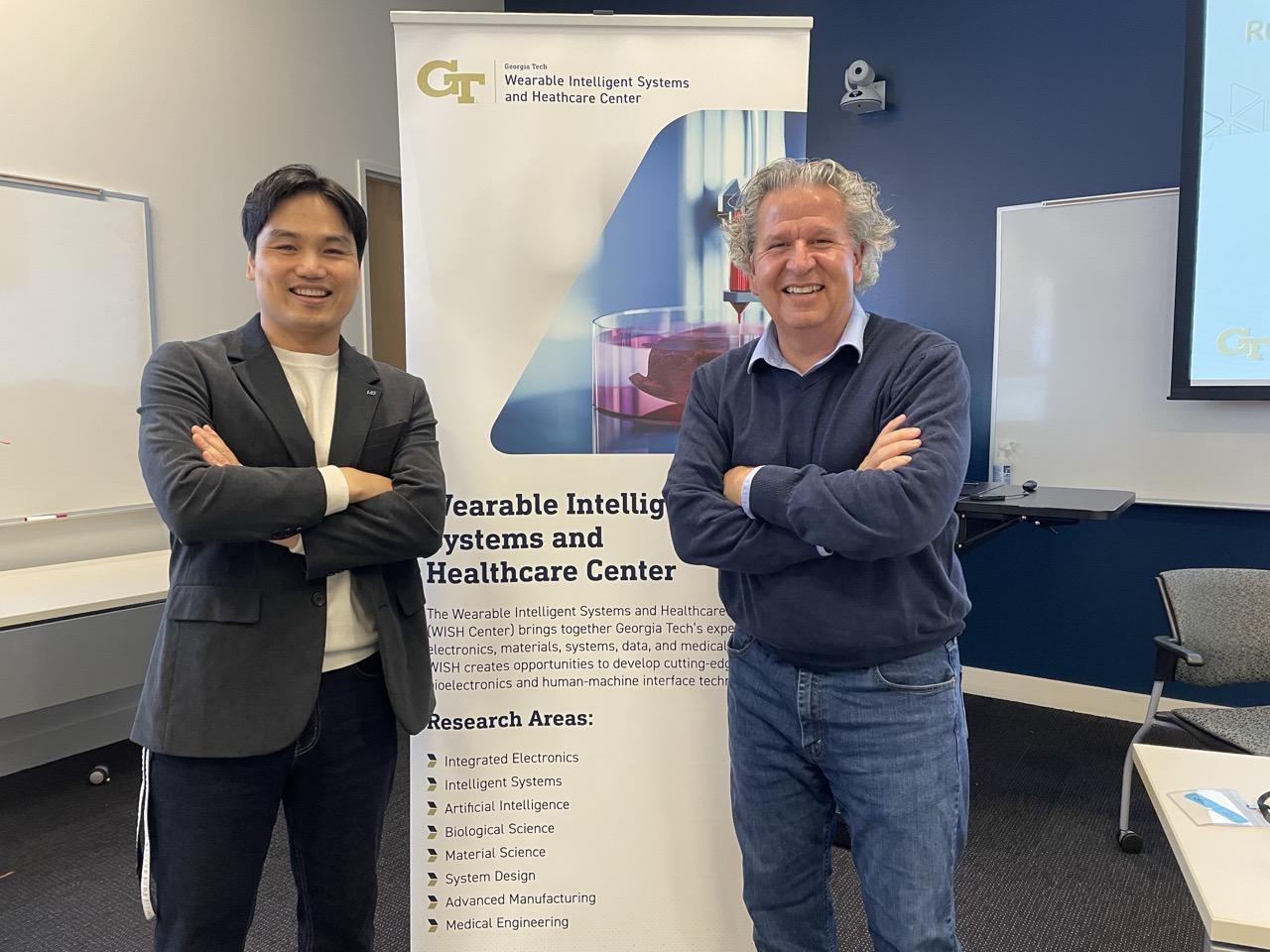
Professors Hong Yeo and Rudy Gleason
Walter Rich
Research Communications
Generative AI Takes Center Stage at Georgia Tech’s 2025 Research Collaboration Forum
- Read more about Generative AI Takes Center Stage at Georgia Tech’s 2025 Research Collaboration Forum
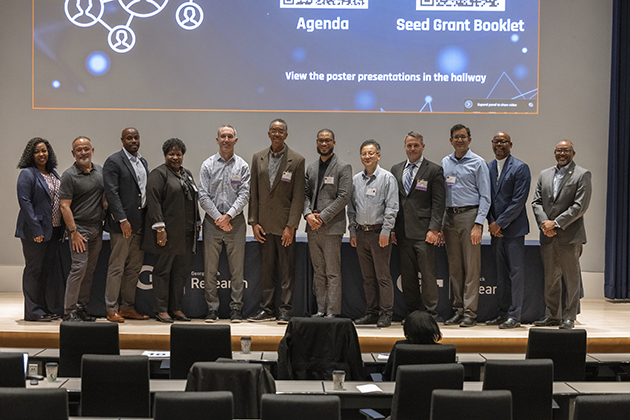
Researchers and partners from Georgia Tech and HBCUs at the 2025 Research Collaboration Forum.
The Year in Photos — 2025
Jingle Bells, Empty Shelves: Inside the Toy Crunch
Dec 02, 2025 —
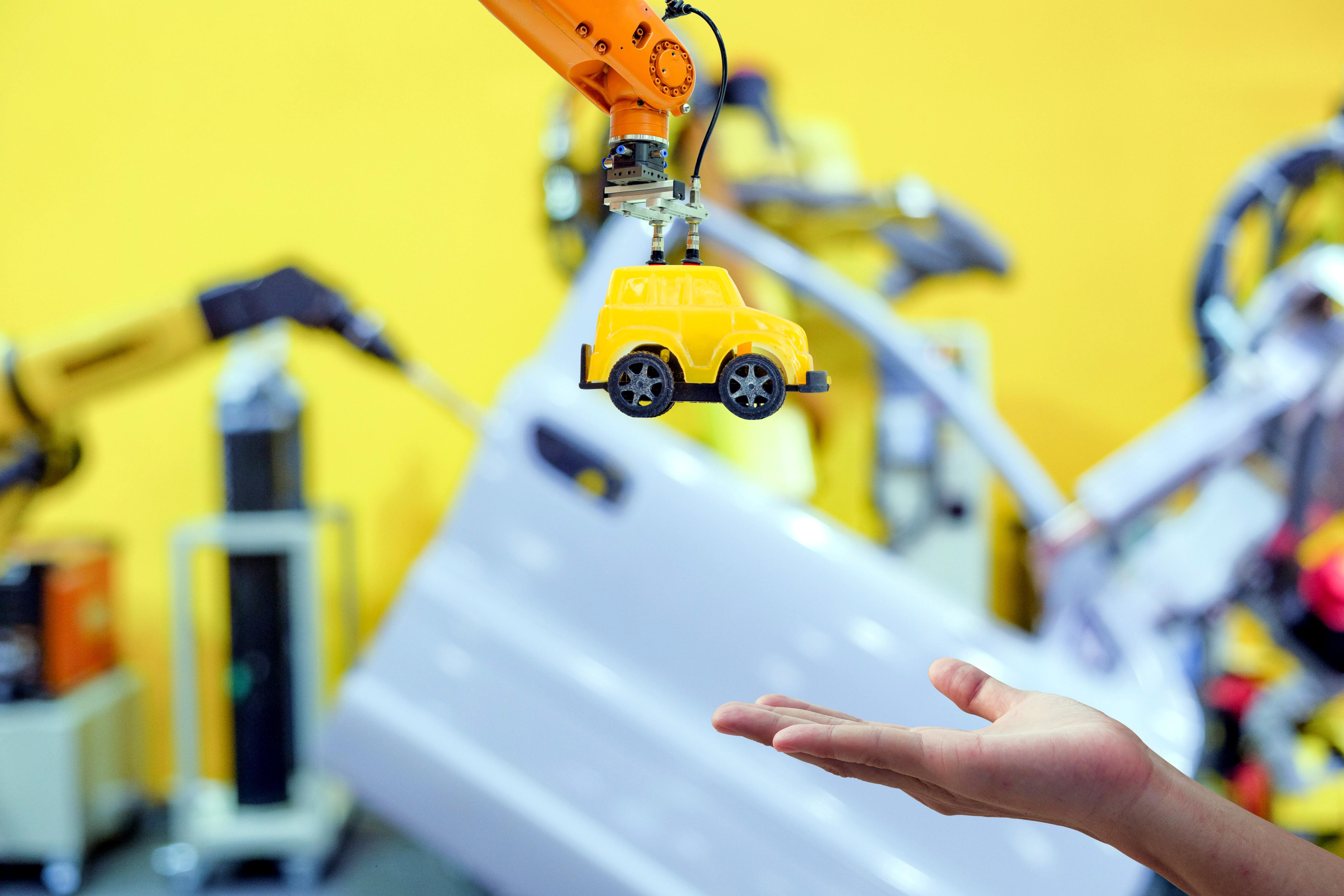
For generations, holiday toy production has followed a predictable rhythm — designs finalized in spring, manufacturing in summer, and shipments arriving just in time for December. This year, that rhythm has been thrown off balance. Global supply chain disruptions, steep tariffs, and soaring shipping costs have created a perfect storm for toy makers, forcing them to rethink strategies and timelines. The result: fewer choices, higher prices, and parents scrambling to secure gifts before shelves run bare.
Tariffs and Turbulence
Political shifts have turned the toy industry’s supply chain into a game of Operation. Stephen Chininis, professor of the practice at Georgia Tech and longtime toy designer, says the impact of tariffs is only beginning to hit consumers.
“Prices are going to go up; there’s no doubt about it, and some products will be scarce,” Chininis explained. “This is not intentional scarcity sometimes built into the toy industry. This is accidental scarcity.”
Manufacturers once relied on China’s speed and low labor costs to react quickly to trends. Now, uncertainty around tariffs has companies freezing expansion and shifting production to places like Vietnam and Thailand, sometimes still under Chinese ownership. Add in skyrocketing shipping costs, and containers that once cost $2,500 now run $20,000.
Industry data confirms the pressure: China still produces nearly 80% of toys and 90% of holiday decorations sold in the U.S., and tariffs as high as 145% have frozen supply chains, causing widespread order cancellations and delays. Reports show 87% of midsize companies and 81% of small companies have delayed orders, and nearly half warn they could shut down if costs persist.
Parents in Panic Mode
When Santa’s workshop slows down, parents speed up. Timothy Halloran, marketing lecturer at Georgia Tech, warns that shortages can spark buying frenzies.
“If people are aware of the toy shortage, a consumer buying panic may set in,” Halloran said. “If it’s a popular toy, you might see a black market emerge — think eBay — where some people are willing to pay top dollar.”
Halloran predicts early shopping and alternative gifts will become the norm. “Those ‘in the know’ will buy early. Those that miss out will either purchase through the black market or resort to alternatives,” he said.
This year, that advice matters more than ever. Analysts report toy prices rose 2.2% between April and May, the steepest monthly increase in four years, and some items could cost two to three times more by Christmas. Retailers are keeping inventories lean, which means fewer choices and faster sellouts for trending toys. Toy manufacturers warn that holiday assortments will be smaller, with fewer backup units behind shelves.
What’s Next for Santa’s Supply Chain
Despite the chaos, Chininis sees the opportunity in innovation. “There’s a big resurgence in non-technology-based toys,” he said. “Parents don’t want extra screens, so designers are finding ways to teach and entertain without relying on electronics. It’s definitely a design-thinking exercise, and some really good toys have come out of that.”
Sustainability is also trending. The eco-friendly toy market is projected to grow from $12.5 billion in 2024 to $23.1 billion by 2033, driven by demand for biodegradable materials and recyclable packaging. According to The Toy Association, 45% of parents under 40 consider a toy’s environmental impact when purchasing, and 55% of parents prefer toys that are sustainable or eco-friendly. Major brands like Mattel and Playmobil are pledging to use 100% recycled or bio-based plastics by 2030, signaling a long-term shift toward greener play.
For parents, the best advice is to shop early, stay flexible, and remember that sometimes the simplest gifts like a kite, a ball, or a board game bring the most joy.
Georgia Tech Researchers Among World’s Most Highly Cited in 2025
Dec 02, 2025 —
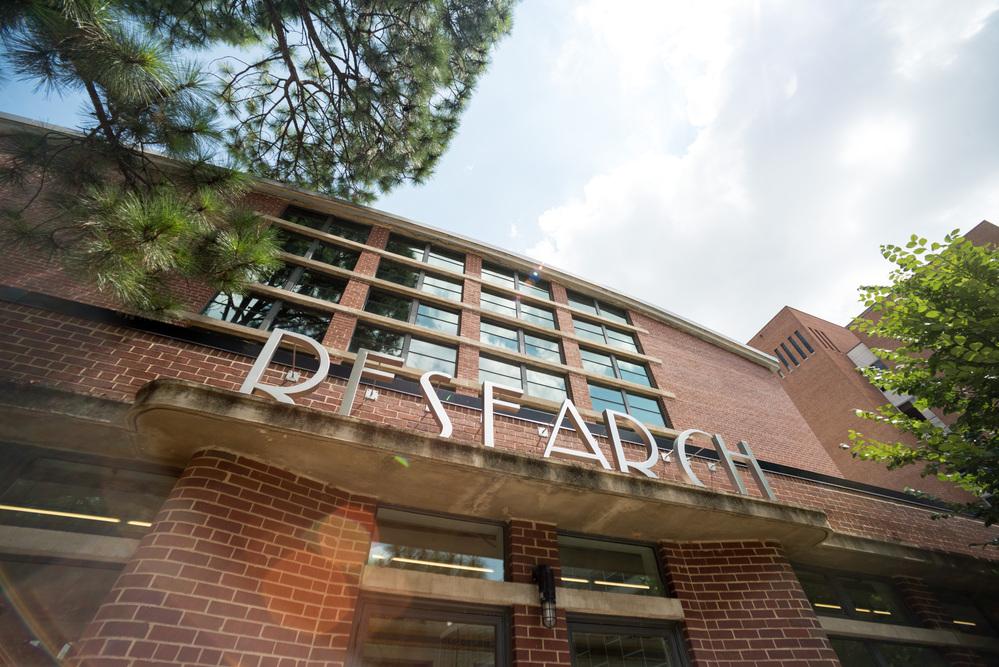
Georgia Tech proudly announces its faculty who have been named to the Clarivate Highly Cited Researchers 2025 list. This list is a global recognition of scholars with work among the top 1% most cited within their fields. This distinction demonstrates Georgia Tech’s leadership in advancing research with broad and lasting impact.
The Institute’s highly cited researchers include:
- Ian F. Akyildiz - retired professor, Electrical and Computer Engineering
- Antonio Facchetti – professor, Hightower Chair, Materials Science and Engineering
- Maohong Fan – adjunct professor, Civil and Environmental Engineering
- Konstantinos Konstantinidis – professor, Environmental Engineering
- Nian Liu – associate professor and Robert G. Miller Faculty Fellow, Chemical and Biomolecular Engineering
- Anant Madabhushi – professor, Biomedical Engineering
- H. Jerry Qi – Woodruff Professor, Mechanical Engineering
- Rampi Ramprasad – Regents’ Entrepreneur, Materials Science and Engineering
- Rodney J. Weber – professor, Earth and Atmospheric Sciences
- C.P. Wong – Charles Smithgall Institute Endowed Chair and Regents’ Professor, Materials Science and Engineering
“Our faculty’s recognition among the world’s most highly cited demonstrates Georgia Tech’s commitment to pioneering discoveries and solving complex global challenges through research,” said Tim Lieuwen, executive vice president for Research. “Congratulations to each of them on this impressive achievement.”
Clarivate’s annual list identifies researchers whose published work demonstrates exceptional influence, based on citation data from the Web of Science Core Collection over the past 11 years. These scholars have authored multiple Highly Cited Papers, which are publications consistently ranked in the top 1% by citations in their respective fields.
Manufacturing’s Future Is High Tech
Dec 02, 2025 —

For decades, manufacturing has been synonymous with job creation, a pillar of economic growth and stability. Today, the industry is evolving into something far more dynamic: a hub for innovation, sustainability, and purpose-driven careers. Experts say this transformation is reshaping not only what manufacturing looks like but why it matters.
Beyond the Assembly Line: A High-Tech Reality
“People still picture manufacturing as the assembly lines of the early 20th century,” says Thomas Kurfess, executive director of the Georgia Tech Manufacturing Institute. “The reality is very different. Modern plants are among the most advanced environments you’ll find, packed with robotics, automation, and data-driven systems. In fact, if you want to see the largest number of robots in one location, it will be at an automotive assembly plant.”
That disconnect between perception and reality is one reason manufacturers struggle to fill roles despite record demand. Kurfess notes that students often overlook manufacturing careers because they assume the work is low tech. “We need to expose educators, parents, and students to what manufacturing truly looks like,” he says. Facility tours and partnerships with technical colleges can help shift the narrative.
Pinar Keskinocak, H. Milton and Carolyn J. Stewart School Chair in the School of Industrial and Systems Engineering, agrees: “Showcasing innovations like AI-driven automation, 3D printing, and smart factories is key to changing perceptions.”
Green Tech and Digital Transformation
The rise of electric vehicles, batteries, and renewable energy is accelerating this shift. “Green technology presents a transformative opportunity for U.S. manufacturing,” Kurfess explains. “It is not just about sustainability; it is about national security and global competitiveness.”
These sectors are inherently digital, says Nagi Gebraeel, Georgia Power Term Professor in the College of Engineering. “Green tech manufacturing is being built in an era when advanced digital technologies are mature and widely accessible. Factories are designed from the ground up with automation and sensing embedded, creating highly interconnected systems.”
This evolution demands new skills. The labor force must navigate environments where operational technology and information technology converge. Gebraeel predicts that by 2035, manufacturing leaders will increasingly come from operations and data-driven backgrounds rather than traditional IT.
The Workforce Challenge
Despite the promise of high-tech careers, talent pipelines remain thin. Manpreet Hora, senior associate dean in the Scheller College of Business, points to a “demand-supply mismatch” driven by rapidly changing skill requirements. “Manufacturing now needs workers who combine technical, digital, and soft skills,” he says. “Meanwhile, younger workers often gravitate toward service industries for perceived growth and tech exposure. The manufacturing sector will collectively need to reposition themselves as employers of choice by making their digital tools visible, highlighting career progression, and offering flexible learning pathways.”
Experts agree that education must adapt. Kurfess advocates for a systemwide approach starting in elementary school, while Gebraeel emphasizes integrating AI into curricula and offering modular micro-credentials for upskilling. Hora adds that hands-on training should reflect realities like AI-enabled operations and sustainability-focused processes.
Purpose and Innovation
For younger professionals seeking meaningful work, manufacturing offers more than a paycheck. “These are high-tech, high-impact roles where workers build products that move the world, from aircraft and medical devices to renewable energy systems,” Kurfess says.
To position the industry as an innovation hub, leaders must embrace technologies that enhance efficiency and quality while fostering collaboration across schools, businesses, and government. “Modernizing the image of manufacturing demands aligned messaging and shared investment,” he adds.
Looking Ahead
By 2035, experts envision a workforce fluent in AI, committed to lifelong learning, and working in environments where cyber and physical systems are seamlessly integrated. Manufacturing will remain a cornerstone of economic strength, but its true value will lie in its ability to innovate, adapt, and deliver purpose-driven careers.
Ayana Isles
Senior Media Relations Representative
Institute Communications
IMS Launches Series on Interdisciplinary Innovation with AI Computing Panel
Dec 01, 2025 —
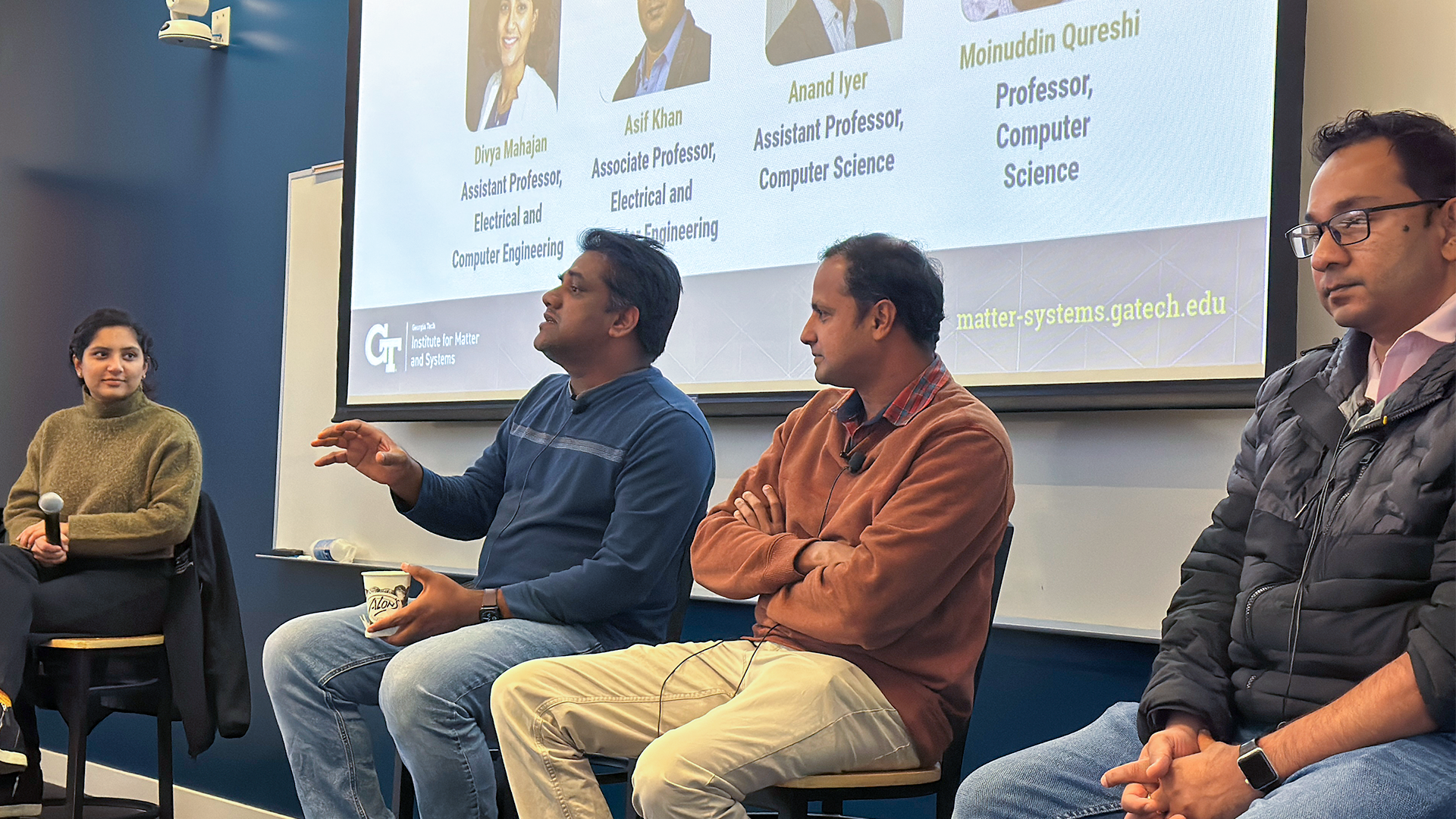
The Institute for Matter and Systems (IMS) hosted the inaugural Boundaries and Breakthroughs panel on Nov. 11, setting the stage for a new era of interdisciplinary dialogue at Georgia Tech. The event, held in the Marcus Nanotechnology building, brought together experts in electrical engineering, computer architecture, and computer systems design to tackle one of today’s pressing challenges: artificial intelligence (AI) scalability and sustainable high-performance computing.
As one of Georgia Tech’s 11 interdisciplinary research institutes, IMS is designed to break down silos between traditional academic units. By operating core user facilities and fostering collaborative research, IMS creates a unique ecosystem where device-level innovation meets systems-level design. This event personified that mission by connecting researchers who typically work on different ends of the stack.
“We’re looking for opportunities to bring people together to have discussions that are both informative and potentially create a little bit of friction in the best possible way around trending topics in science and engineering,” said Mike Filler, IMS deputy director, during opening remarks.
The panel was moderated by Divya Mahajan, assistant professor in the School of Electrical and Computer Engineering, and featured Moinuddin Qureshi, professor of computer science; Anand Iyer, assistant professor of computer science; and Asif Khan, associate professor in electrical and computer engineering.
The discussion explored the dynamics between compute abundance and energy constraints. As AI models scale up, power consumption has become a societal issue, driving up energy demands and even influencing political conversations. The panelists agreed that the bottleneck isn’t compute — a computer’s ability to process and execute tasks — but data movement. Moving data uses 100 to 1,000 times more energy than computation, making memory systems the critical frontier.
The conversation highlighted how breakthroughs in compute must occur at every layer — from individual devices to full computer systems. At the device level, Khan mentioned emerging memory technologies and “beyond CMOS” approaches such as embedding compute within memory and exploring bio-inspired architectures.
From a computer architecture level, Qureshi advocated rethinking interfaces and creating designs optimized for the future of computing. AI needs regular patterns to work optimally, and current patterns are not set up for that.
“If you want efficiency, design systems that make sense for AI,” Qureshi said. “Develop new interfaces, develop new modules, architectures, and organization that make for a specific pattern.”
At the systems level, Iyer stressed practical strategies like near-memory compute and energy-aware scheduling while acknowledging the need for co-design between hardware and software.
“Now in terms of brains or bio-inspired computing, my conjecture is that there is currently no hardware that is capable of doing it,” Khan said. He also noted that right now, there is no computer or algorithm that has the scale of computing comparable to human brain power.
The panelists didn’t shy away from provocative ideas — such as whether graphic processing units are the final solution for AI and whether matrix multiplication alone can lead to artificial general intelligence. While opinions varied, all agreed that organizations like IMS are key to bringing together diverse expertise to tackle these questions collaboratively.
The Boundaries and Breakthroughs series continues in January with a panel on bioelectronics and medical technologies, reinforcing IMS’s commitment to fostering dialogue that spans the full spectrum of innovation.
Amelia Neumeister | Research Communications Program Manager
The Institute for Matter and Systems
